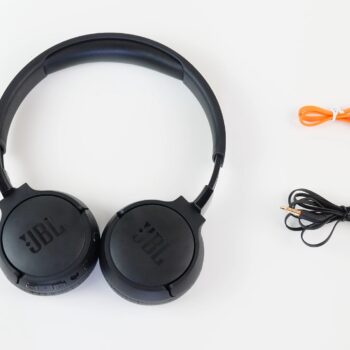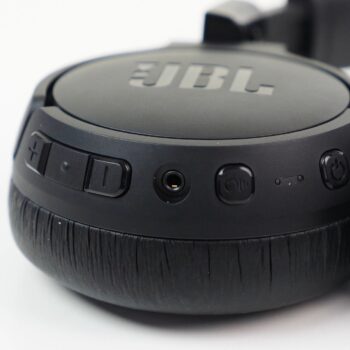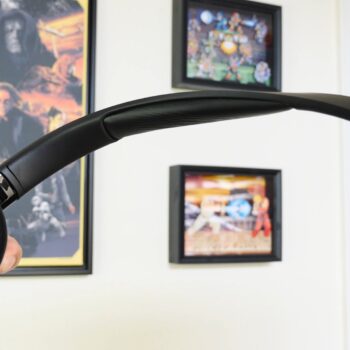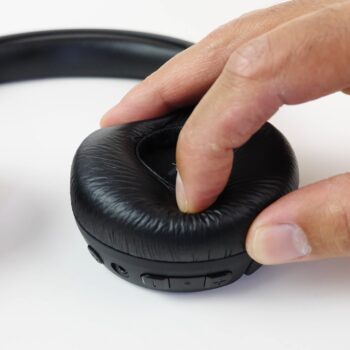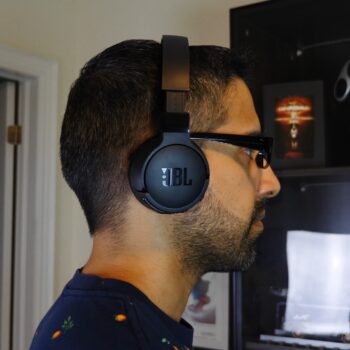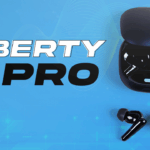Hey! Welcome, everyone. In this article, I’ll review the JBL Tune 660NC noise-canceling on-ear wireless headphones.
Price
Starting with the price, they’re $149 CAD or $99 USD, making them mid-tier priced headphones. They often go on sale, so I suggest waiting for a discount.
Connectivity
They support both wireless and wired connections. The included auxiliary cable is 48 inches long with 3.5mm ends. The auxiliary port is on the bottom of the right ear cup, allowing use even when the battery is dead. However, you can’t use them while recharging.
The wireless connection uses Bluetooth 5.0, which is a bit older but stable and performs well. There’s no official range info, but I got about 30-35 feet through two walls in my house without signal distortion or crackling.
It supports dual connectivity, allowing connection to two devices simultaneously. If one device is your phone, content will pause if a call comes in. You can keep two devices in memory, unlike some mid-tier headphones that support more.
Accessories
For mid-tier headphones, there’s a notable lack of accessories. No travel case is included, which is disappointing. However, it comes with an auxiliary cable and a USB-A to USB-C charging cable, but not pure USB-C. The cable is about six inches long, and no charging adapter is included, which is common.
Design & Comfort
The 660 looks decent, but the buttons are a bit large, making the design look crowded. The JBL logo is also quite large, adding to the crowded feel. Available colors are white, blue, black, and pink.
It supports a folding design at the earcups but not the headband. Weighing 166g, it’s light and mostly plastic, but surprisingly durable, able to withstand some abuse.
There’s no information in the documents or online about dust and water resistance, so it’s safe to assume they aren’t. Don’t risk it.
For comfort, I tested them with and without glasses over a few hours. In both cases, the earcups made my ears warm within five minutes. It wasn’t unbearable but a bit annoying. With glasses, I felt slight pain on my earlobes, especially after removing the headphones, due to the headband pressing the earcups into the glasses frame. This caused discomfort and a small surge of pain when the tension was released (when taking the 660NC off while wearing glasses). So, they’re not the most comfortable, especially for glasses wearers.
For working out, I don’t recommend them. Even at rest, my ears got warm, and during exercise, they’d likely get very sweaty and uncomfortable. Not ideal for any kind of workout.
The ear pad cushioning is soft to the touch but quite firm, which might cause the headphones to heat up on your ears more than desired.
The interior headband cushioning is adequate for those with little to no hair. The headband adjusts in notches, not with a slider, and the ear cups rotate in all directions.
Finding replacement earpads was challenging; they weren’t available on the official website or easily found through third-party retailers. However, with some searching, they can be found through third-party retailers.
If you wear the headphones around your neck, turning your head left and right is easy due to the small ear cups, and looking down is manageable despite the earcups bumping into my chin.
Controls
All controls are on the right earcup: a power button for on/off and Bluetooth pairing, a button to switch between ANC (active noise canceling) and regular mode, and a button to lower the volume or go to the previous track when held. There is no transparency mode, so you can’t hear your surroundings through the headphones.
The next button is multifunctional: it can play/pause content, answer/hang up calls, and double-tap to activate the smart assistant. The last button increases volume and, when held, goes to the next track.
Regarding the design, the buttons are a bit too large and look crowded, but they are still easy to use. They could have been smaller.
As mentioned the smart assistant is activated by double-tapping the play button. During testing with Android and Google Assistant, there were two issues: no tone to indicate activation so I had no idea when it was listening for my commands, and the assistant’s responses were barely audible even at high volume.
Mid-tier headphones like these may lack passive play/pause functionality, which automatically pauses content when removed and resumes when worn again. This feature is not available here but is not typical for all mid-tier headphones so not a concern here as a negative point.
Noise Cancelling
The noise canceling performance was impressive for this price range, comparable to more expensive mid-tier headphones. JBL did a fantastic job with noise canceling. While it doesn’t completely cancel out vocals, it muffles them enough that you can still understand what people are saying. On a bus or train, you can still listen to your content, even podcasts, by slightly increasing the volume. It effectively reduces low humming sounds from engines, performing better than expected at this price point. It’ll even be enough to be used on a plane but of course you’ll have to increase the volume of your content quite a bit to hear it.
Passive noise canceling isn’t as effective; vocals still come through clearly within a 5-10 ft range, though slightly muffled. For loud engine noises, ANC mode is necessary. Always keep ANC mode on for the best experience.
There’s no sidetone mode, which means you can’t hear your surroundings or your own voice during calls. This feature is not common in mid-tier headphones, so it’s not a big deal.
Battery
When discussing battery performance, JBL claims the headphones last about 44 hours with ANC mode on, though they don’t specify the volume level. In my tests at 60% volume with ANC on, I got around 42 hours, which is close to their claim. For regular mode, their claim is 55 hours, and my testing confirmed this with the same result.
Recharging the headphones is claimed to take about two hours, but I found it to be faster, averaging 1.5 hours. The charging port is located on the top of the right ear cup and uses a USB-C fitting.
Microphone Quality
Situated in a quiet environment, the 660NC microphone performed excellently and would make people on the other end of the call think that you’re using expensive headphones. The audio from my voice was crystal clear with minimal echo coming through.
Replicating a noisy environment, my voice came through just as clear while in a quiet setting and only a slight hint of the background noise coming through. Most of the surrounding noise was hardly noticeable and came through at a significantly lower volume.
In a windy setting is where the microphone underperformed. It did a poor job of cancelling out noise from the wind. My voice was clear enough to make out what was being said but a fair amount of noise from the wind still came through.
Audio Quality
The audio quality supports SBC and AAC codecs. Out of the box, it performs well across all sound areas, satisfying most users with a good flat profile, which is impressive for this price point.
Adjusting settings in a third-party equalizer can make the bass rumble nicely, though it might not fully satisfy bass enthusiasts. However, you still need to consider the price of the headphones isn’t expensive. Even at high volumes, the bass remains clear without distortion, and the rest of the audio stays crystal clear.
The mids increased is where it suffers most, with vocals sounding separated from the instrumentals. If you prefer enhanced vocals, these headphones might not be ideal. The highs, however, perform well, delivering sharp, crisp sounds without being overbearing.
Overall, the sound quality is good, except for the slightly stretched-out vocals.
When wearing these headphones with glasses, I noticed no difference in sound quality. The glasses frame didn’t interfere at all.
Software
There’s no native app functionality, and these headphones aren’t compatible with the JBL mobile app, which is disappointing. Hence the reason I had to use a third-party equaliser during my audio adjustment testing.
At this price, it is a huge letdown to not have app compatibility. I even researched on the internet if I was perhaps overlooking something and several redditors have confirmed no native app availability.
Conclusion
To summarize, the 660 has potential but falls short in three major areas: comfort, no included travel case, and no app functionality. I suggest considering alternatives like the excellent Sony WH-CH520, which are similarly priced (actually, they’re slightly cheaper).
Score:
6.5/10
Pros:
-Auxiliary connection
-Wired listening with dead battery
-Bluetooth range
-Dual connect
-Build strength
-Colour options
-Replacement cushions
-Easy to use controls
-ANC performance
-Battery
-USB-C charging port
-Microphone in quiet setting
-Okay noise cancelling microphone
-Mostly good audio quality
Cons:
-No multi-device memory
-No carrying case
-Crowded design
-USB-A to USB-C cable
-Not comfortable
-Voice assistant performance
-No transparency mode
-Microphone wind noise blocking
-Mids in equaliser
-No app



